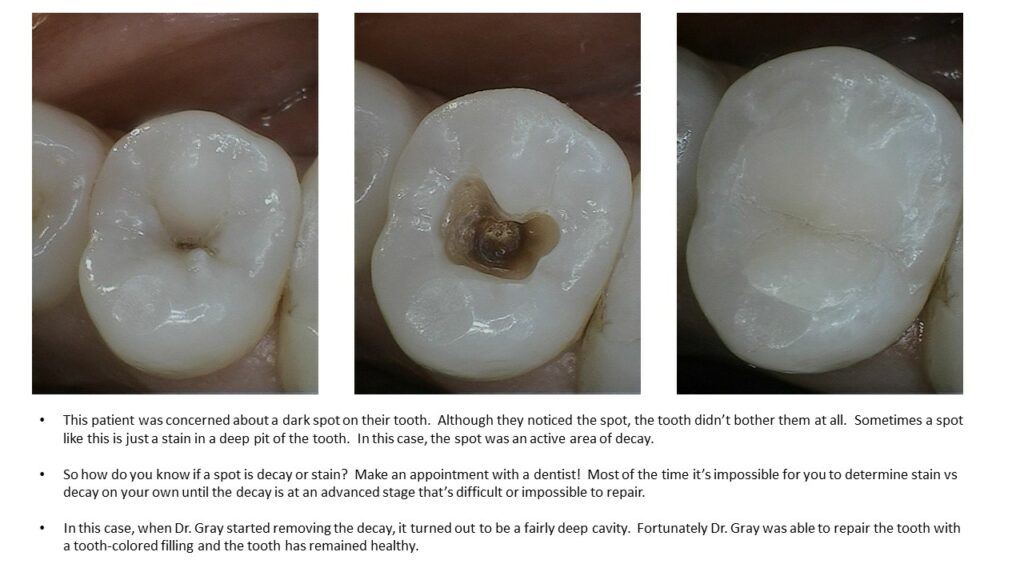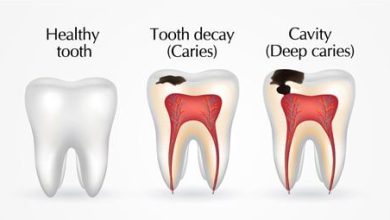Can a Decayed Tooth Be Saved? Discover the Power of Dental Restoration

Yes, a decayed tooth can be saved through dental treatments like fillings, root canals, and crowns. A decayed tooth can cause pain and discomfort, impacting your ability to eat, speak, and smile with confidence.
However, with the help of modern dental treatments, there is hope for saving a decayed tooth. Dental fillings can be used to remove the decayed portion of the tooth and restore its shape and function. In more advanced cases, a root canal procedure may be necessary to remove the infected pulp and save the tooth.
Additionally, dental crowns can be used to strengthen and protect a severely decayed tooth. It’s important to consult a dentist who can assess the extent of decay and determine the most suitable treatment option to save your tooth.
Understanding Tooth Decay And Its Consequences
Understanding Tooth Decay and Its Consequences
Tooth decay, also known as dental caries, is a common dental problem that occurs when the acids produced by bacteria in plaque erode the tooth enamel. Poor oral hygiene, excessive consumption of sugary and acidic foods, and infrequent dental visits can contribute to the development of tooth decay. As the decay progresses, it can lead to several complications and potentially affect the overall oral health.
How tooth decay occurs
Tooth decay occurs when the bacteria in plaque break down sugar and other carbohydrates in the mouth, producing acids that attack the tooth enamel. Over time, these acids create cavities and weaken the structure of the tooth. Regular brushing and flossing, along with a balanced diet and dental check-ups, can help prevent tooth decay.
The progression of dental decay
Tooth decay typically starts as a small, white spot on the tooth surface. As the decay progresses, it may turn brown or black and become more noticeable. Without treatment, the decay can penetrate deeper into the tooth, reaching the dentin and eventually the pulp, causing pain and infection.
Potential complications if left untreated
If left untreated, tooth decay can lead to various complications, including tooth loss, abscess formation, gum disease, and even systemic health problems. The bacteria responsible for tooth decay can enter the bloodstream and contribute to systemic inflammation and other health issues. Therefore, it is essential to address tooth decay promptly to prevent further damage.
Exploring Dental Restoration Options
Dental decay is a common issue that can lead to discomfort, pain, and tooth loss if not addressed promptly. Fortunately, there are various dental restoration options available to save decayed teeth. Fillings are a conservative approach that involves removing the decayed portion of the tooth and filling it with a tooth-colored material, restoring its strength and function. This procedure is ideal for minor to moderate decay.
Dental crowns are recommended for more extensive decay. Made of durable materials such as porcelain or metal, crowns provide strength and protection to highly decayed teeth. They are custom-made to fit over the entire tooth, restoring its natural appearance and preventing further damage.
In cases of severe tooth decay, root canal therapy can be an effective treatment option. This procedure involves removing the infected pulp from the tooth, cleaning and disinfecting the area, and then filling and sealing it. Root canal therapy can save severely decayed teeth from extraction, allowing patients to maintain their natural smile.
Evaluating The Effectiveness And Success Rates
Decayed teeth can often be saved through dental restorations, but the success of these treatments depends on various factors. The longevity and durability of different restoration methods play a crucial role in determining the success rates.
| Factors affecting success | Success rates of restoration techniques |
|---|---|
| Degree of decay | Fillings: |
| Location of decay | Crowns: |
| Size of decay | Root canals: |
| Health of surrounding gums | Dental implants: |
| Quality of oral hygiene | Dentures: |
Fillings are generally successful for smaller decayed areas, while crowns are more suitable for extensive damage. Root canals are effective for saving severely decayed teeth with infected pulp. Dental implants offer a long-lasting solution for missing teeth, while dentures are recommended for individuals with multiple missing teeth.
Successful dental restorations require proper diagnosis, treatment planning, and the expertise of a skilled dentist. Regular dental check-ups and maintaining good oral hygiene can also contribute to the success and longevity of restorations.

Credit: poudrevalleyfamilydental.com
Discussing Dental Restoration Procedures
When a tooth is decayed, it may not always be necessary to extract it. Dental restoration procedures can help save a decayed tooth, restoring its function and appearance. One such procedure is getting a dental filling. This process involves the removal of decayed material from the tooth and filling the cavity with a tooth-colored material. The filling helps prevent further decay and strengthens the tooth.
In cases where the decay is more extensive or the tooth is weakened, a dental crown may be recommended. This step-by-step guide involves the preparation of the tooth, taking impressions, and fabricating a custom crown to fit over the tooth. The crown acts as a protective cap, restoring the tooth’s shape, strength, and function.
For more severe cases of decay, a root canal procedure may be necessary. This involves removing the infected pulp inside the tooth, cleaning and shaping the root canals, and filling them with a biocompatible material. Once the root canal is complete, a crown or filling is placed to restore the tooth.
By undergoing these dental restoration procedures, a decayed tooth can be saved, allowing for proper chewing, speaking, and maintaining the natural appearance of the smile.
Advantages And Disadvantages Of Dental Restoration
Advantages and Disadvantages of Dental Restoration
- Benefits of preserving natural teeth through restoration: Dental restoration procedures can help save a decayed tooth by removing the decayed part and repairing it with dental materials. Preserving natural teeth through restoration can maintain your biting and chewing function, as well as improve your appearance. It also prevents adjacent teeth from shifting and reduces the risk of gum disease and jaw problems.
- Potential drawbacks or risks associated with dental restorations: Some drawbacks of dental restorations may include high cost, discomfort during the procedure, and the need for regular maintenance. Additionally, the outcome of a restoration may not always be permanent, and it may require replacement or repair in the future.
- Comparing the advantages and disadvantages of different restoration options: When considering dental restorations, it is important to weigh the pros and cons of different options such as fillings, crowns, veneers, and dental implants. Each option has its own advantages and disadvantages, including factors like durability, aesthetics, and cost.
Maintaining Restored Teeth For Longevity
A decayed tooth can often be saved through various dental treatments and restorative procedures. However, maintaining the longevity of the restored tooth requires proper oral hygiene practices and regular dental visits for follow-up care.
Oral hygiene practices play a crucial role in preventing further decay and ensuring the success of any dental restoration. This includes brushing your teeth at least twice a day with a fluoride toothpaste and flossing daily to remove plaque and food particles from hard-to-reach areas.
In addition, using an antimicrobial mouthwash can help reduce the bacteria in your mouth and protect your teeth. Avoiding sugary and acidic foods and drinks, which can contribute to tooth decay, is also essential for maintaining the health of restored teeth.
Regular dental visits are important to detect any potential issues early on and address them promptly. Communicating with your dentist about any concerns or problems you may have, such as sensitivity or discomfort, is crucial in maintaining the restored tooth’s health.
By following these guidelines and maintaining good oral hygiene, you can increase the chances of saving and preserving a decayed tooth for the long term.
Making An Informed Decision About Dental Restoration
When a tooth is decayed, it is important to make an informed decision about dental restoration. Factors to consider when deciding on the best restoration option include consulting with a dentist for personalized recommendations and understanding the cost and insurance coverage. Consulting with a dentist is crucial as they can assess the severity of the decay and recommend the most suitable treatment option. They will consider the extent of the decay, the health of the surrounding teeth and gums, and the patient’s overall oral health. Understanding the cost and insurance coverage is also important as different restoration options may vary in price and coverage. It is essential to have a clear understanding of the financial aspect before proceeding with any dental restoration procedure. By carefully considering these factors, individuals can make an informed decision regarding the restoration of a decayed tooth.
Frequently Asked Questions On Can A Decayed Tooth Be Saved?
When Can A Decayed Tooth Not Be Saved?
A decayed tooth cannot be saved when the decay has reached the innermost part of the tooth.
What Will A Dentist Do For A Decaying Tooth?
A dentist will treat a decaying tooth by removing the decayed portion and filling it with a dental filling or crown.
Can A Rotten Tooth Go Back To Normal?
Rotten teeth cannot go back to normal on their own. Treatment options, such as fillings or extraction, are needed to address the decay and prevent further damage or infection. It is essential to consult a dentist for proper evaluation and appropriate dental care.
Can A Decayed Tooth Be Saved?
Yes, a decayed tooth can be saved depending on the extent of the decay. In cases of mild to moderate decay, a filling can be placed. If the decay is severe, a root canal treatment may be needed to save the tooth.
It’s important to visit a dentist as early as possible to determine the best course of action.
Conclusion
Saving a decayed tooth is possible with the right dental intervention. A decayed tooth can be treated through various procedures, including fillings, root canals, and dental crowns. Prompt treatment is crucial in preventing further damage and potential tooth loss. Consulting a dentist and following good oral hygiene practices can help preserve your natural teeth and maintain your oral health.
Remember, prevention is always better than cure. Take care of your teeth to ensure a healthy and confident smile for years to come.






One Comment